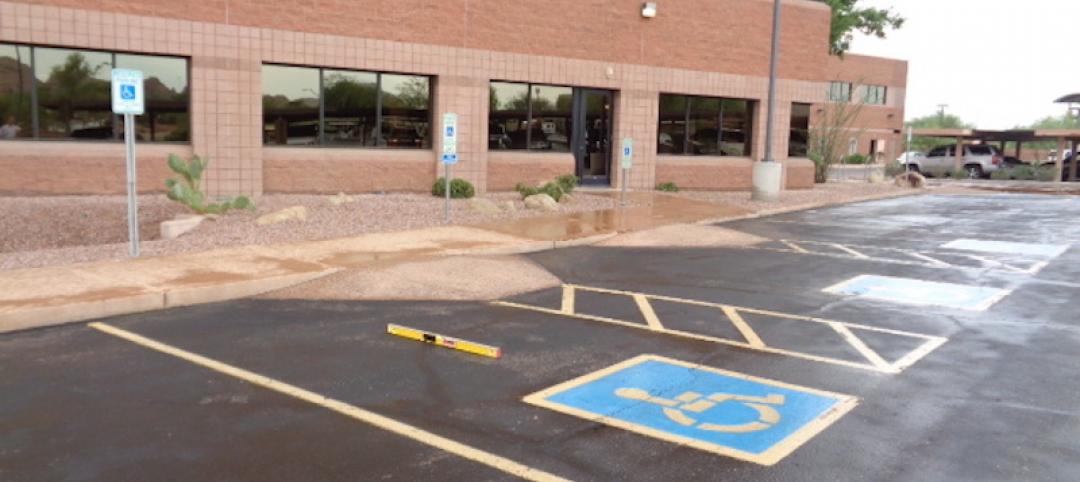Regardless of whether a construction project involves millions of dollars and dozens of subs and consultants or has a modest budget and scope, keeping track of progress and payments is a critical, ongoing process. Owners, who have multiple contractual obligations, have a particularly large stake in the process.
Construction contracts typically call for the project owner to make periodic progress payments to the general contractor and architect. There is no single method of calculating progress payments, but the most common formula is the percentage of completion applied to the total contract price, less a retainage which is held by the owner until final acceptance of the project. On simpler jobs, payments are frequently tied to milestones in the work.
“Certified”—The Word Carries Weight
In wide use for 25 years, the American Institute of Architects’ Application and Certificate for Payment form G702-1992 (and its accompanying Continuation Sheet G703-1992) serves as both the contractor’s application for payment and the architect’s certification of that request. Submitted to the project owner, the forms require the contractor to show the status of the contract sum to date, including the total dollar amount of the work completed and stored to date, the amount of retainage (if any), the total of previous payments, a summary of change orders, and the amount of the payment currently requested.
Its use can expedite payment and reduce the possibility of error. If the application is properly completed and acceptable to the architect, the architect’s signature certifies to the owner that a payment in the amount indicated is due to the contractor.
The G702-1992 contains language that significantly impacts everyone who works with it.
A close reading of the document spells out what an owner can expect from the architect when signing off on a progress payment:
In accordance with the Contract Documents, based on on-site observations and the data comprising this application, the Architect certifies to the Owner that to the best of the Architect’s knowledge, information and belief the Work has progressed as indicated, the quality of the Work is in accordance with the Contract Documents, and the Contractor is entitled to payment of the amount certified.
It’s important to note that this is not a blank-check authorization, either literally or figuratively. The form allows the architect to certify a dollar amount that is different than the amount applied for by the contractor, with an explanation provided by the architect. The primary purpose of this certification is for the architect to confirm that the contractor has not billed the owner for more work than actually has been performed.
The language for contractors in the G702-1992 is similar, with three points that require certification (and subsequent notarization):
The undersigned Contractor certifies that to the best of the Contractor’s knowledge, information and belief the Work covered by this Application for Payment has been completed in accordance with the Contract Documents, that all amounts have been paid by the Contractor for Work for which previous Certificates for Payment were issued and payments received form the Owner, and that current payment shown herein is now due.
Truth or Consequences: The Impact of False Certification
Filing a false or inaccurate G702-1992 has repercussions for all parties. As far as architects are concerned, an erroneous certification can expose them to a claim of negligence. Contractors put themselves at risk of fraud and misrepresentation if the certification is not truthful.
From the owner’s perspective, there are several reasons for concern. Considering that an owner’s exposure to liens by subcontractors is significant when contractors delay or fail to pay their subcontractors, the certification language of the G702-1992 has been developed to warrant that the contractor has paid its subcontractors.
An owner wants to ensure that funds are available throughout the duration of the project. Overpaying at the start of work, or over the course of a job through inflated progress claims by the contractor, creates a possibility that finances will be exhausted before the work is completed. This situation may arise when contractors overstate the percentage of progress for the work (or any line item on the schedule of values), or when contractors overly front-load the schedule of values in order to receive additional funds at the start of the project under the guise of working capital.
Challenging a progress payment, while at times necessary, often has the unwanted side effect of delaying construction. Delays in and of themselves can trigger lawsuits, subject the project to price increases in materials, and of course put the scheduled opening date of a project in jeopardy.
Protection for Owners
At Rider Levett Bucknall, we’ve identified several sound principles that can help owners bring projects in on time and on budget. Fundamental yet effective, they apply to projects of any scale.
- Watch your (contract) language. A proactive step that can benefit all parties, a well-written contract is essential. Terms and conditions must be clear and unambiguous. Because the manner in which progress payments are calculated or structured is a matter of contractual consent, a sloppily written contract can lead to miscommunication and misunderstandings—problems that could land an owner in court. Troubleshooting the language regarding progress payments before signing a contract can help avoid such situations.
- Call in the pros. Acting as the owner’s representative, construction management professionals are charged with controlling a project’s schedule, cost, scope, and quality from inception to completion. A skilled, experienced project management team can keep the job on track, and, just as importantly, give the owner leverage over any disputes that might arise. (But finding such help may be increasingly challenging: a recent industry survey found that 45% of owners report that a lack of qualified project managers is impeding progress on their projects.)
- Ensure accountability. Owners can reject requests for payment because of incorrect completion percentages, incorrect math, or applications that are submitted late. In order to achieve profitable progress billing revenue recognition, effective processing is important. Owners (or their authorized representatives) should be sure to review vendor invoices and percentage completions with field supervisors to avoid over- or under-billing. Also, while it may sound elementary, be certain to double-check calculations—an errant decimal point can make a big difference.
- Stick to the plan. A study published by the Associated Schools of Construction in 2017 points out that the role of the owner was significant as a top factor in causing construction project delays, and change orders were identified as the primary cause. While some COs are to be expected in the course of any project, taking extra care in the design phase can help minimize the disruption they cause.
Pay the Bills, Not the Piper
In the end, properly certified progress payments give owners control not just of the financial aspects of a project, but its overall successful completion. Instituting a transparent, verifiable process can help ensure that all parties are free to focus on delivering their best work with security and confidence.
John T. Jozwick, Esq. is Senior Executive Vice President and General Counsel for Rider Levett Bucknall North America. With more than 35 years in the construction industry, John provides advisory services to owners, contractors, subcontractors, design professionals, sureties, and attorneys relating to construction projects and disputes. He serves clients as an expert witness on construction disputes, including construction defect matters. Additionally, John provides Alternative Dispute Resolution (ADR) services as a Mediator and Arbitrator of construction disputes, and provides construction dispute avoidance services as a Dispute Resolution Board (DRB) member or Project Neutral.
More from Author
Rider Levett Bucknall | Aug 14, 2023
Fast-tracking construction projects offers both risk and reward
Understanding both the rewards and risk of fast-tracking a project can help owners, architects, engineers, and contractors maximize the benefits of this strategy and can bring great reward on all fronts when managed properly.
Rider Levett Bucknall | May 31, 2022
Checking out: Tips for converting hotels to housing
Many building owners are considering repositioning their hotels into another property type, such as senior living communities and rental apartments. Here's advice for getting started.
Rider Levett Bucknall | Feb 14, 2022
How building owners and developers can get ahead of the next supply chain disaster
Global supply chain interruptions that started at the very beginning of the pandemic are still with us and compounding every step of the way. Below are a few proven tips on how to avert some of the costly fallout should we be faced with similar commercial disasters at any time in the future.
Rider Levett Bucknall | Jul 24, 2019
Design goooals for football stadiums: Lessons from the U.K. and the U.S.
Both professional soccer and football have vigorously pursued targeted global growth.
Rider Levett Bucknall | Apr 30, 2018
Following—and forecasting—the money: Financial modeling for project managers
To wait until there’s a problem affecting design and construction before consulting with a PM wastes valuable time when a project is at its most vulnerable point.
Rider Levett Bucknall | Jan 11, 2018
Harvesting energy and profits: A new approach to MEP cost analysis
In the course of providing cost estimating services, educating the client on making prudent choices is a high priority.
Rider Levett Bucknall | May 3, 2017
Avoiding trouble in paradise: Tips on building successfully in the Caribbean
The island setting itself is at the root of several of these disruptive assumptions.
Rider Levett Bucknall | Feb 8, 2017
Don’t leave your office or business vulnerable to drive-by lawsuits
Across numerous states, unscrupulous attorneys are filing hundreds of “drive-by” lawsuits that are founded on noncompliance with ADA regulations against businesses that often have no idea they have done anything wrong.
Rider Levett Bucknall | Nov 10, 2016
Prescription for success: Managing technology in the design of healthcare facilities
While the benefits of intelligently deployed technology are abundantly clear to both designers and healthcare end-users, it’s no simple task to manage the integration of technology into a building program.
Rider Levett Bucknall | Aug 29, 2016
Home maintenance 101: How uninformed homeowners can cause developers big headaches, and what to do about it
By taking a proactive stance, the home-building industry can both educate the public about the importance of home maintenance and raise awareness within the construction community about protecting their professional rights and reputations.















